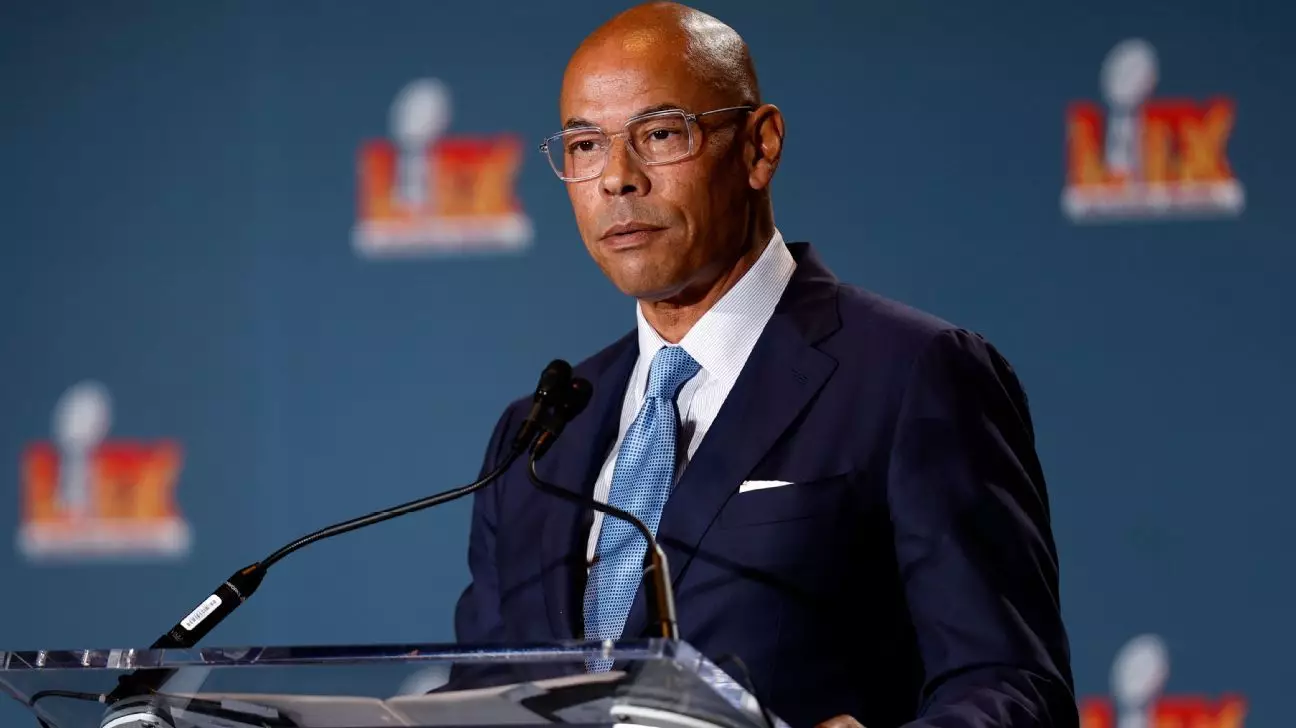In recent weeks, the NFL Players Association (NFLPA) has found itself at a crossroads that challenges not only its leadership but also its integrity and unity. The core issue revolves around the actions of Executive Director Lloyd Howell Jr., whose dual roles and potential conflicts of interest have stirred controversy. While the NFLPA’s executive committee publicly supports Howell, subtle tensions and unspoken doubts threaten to undermine the collective trust that is vital for an effective union. The union’s effort to publicly deny any rift or desire for Howell’s resignation appears more like an attempt to project strength than a reflection of internal harmony. Such public displays often mask deeper fissures that could influence the union’s negotiations and overall influence.
The union’s stance emphasizes careful investigation over hasty judgments, a commendable approach in theory. However, this deliberate process can also be perceived as cautious foot-dragging, especially when the stakes involve conflicts of interests and transparency. Players, the primary stakeholders, deserve a leadership that embodies unwavering integrity and transparency—qualities that are called into question by Howell’s reported activities. The union’s claims of loyalty to its mission are admirable but seem increasingly strained as reports of potential conflicts of interest emerge, raising the broader question: can trust be restored once it is compromised?
Conflict of Interests and the Power Struggle Behind Closed Doors
At the heart of the controversy is Howell’s alleged involvement as a paid, part-time consultant for the Carlyle Group, a private equity giant with vested interests in NFL franchises. The timing and nature of this relationship raise eyebrows. Private equity firms like Carlyle are actively seeking minority stakes in NFL teams—an endeavor that blurs the lines between representing player interests and advancing corporate agendas. The potential for conflicts of interest is palpable: Howell, as the union’s leader, might be inadvertently or deliberately influencing union policies while also having stakes in league-related private ventures.
Despite Howell’s claims that concerns originated from “a union employee” and that he intends to “do his due diligence,” the controversy underscores a broader issue: the opaque nature of leadership decisions. Confidentiality agreements surrounding arbitration decisions further complicate the picture. When critical information—like findings that league officials encouraged teams to reduce guaranteed salaries—is kept under wraps, it fuels skepticism about transparency and the union’s willingness to hold the league accountable. The secrecy surrounding arbitration proceedings, along with the union’s silence, hints at an inward-looking leadership more focused on damage control than genuine reform.
The power struggle within the NFLPA is emblematic of a broader battle between preserving union strength and managing internal conflicts. While union leaders are tasked with protecting players’ interests, they are also pressured by financial and political stakes that threaten to dilute their advocacy. The hiring of high-profile legal counsel, such as Ronald C. Machen, signifies an escalation—demonstrating that the union is willing to confront these issues head-on. Yet, such moves also reveal internal divisions, with some questioning whether the union’s leadership has the cohesiveness needed for meaningful change or if it is merely managing a complex power play.
The Future of the NFLPA: Between Loyalty and Accountability
As the NFLPA enters a pivotal phase before the 2025 season, its leadership faces a defining challenge: balancing loyalty to its leadership with the need for accountability and transparency. Howell’s appointment in 2023 signaled a new era, promising fresh perspectives but also ushering in new dilemmas. The decision to pursue an appeal of the arbitration ruling and the ongoing review of Howell’s activities suggest a union actively wrestling with difficult truths.
The union’s recent public statements reveal a desire to project strength, yet behind the scenes, doubts are simmering. Players—and by extension, the future of union strength—must question whether their leadership truly aligns with their interests or whether internal power dynamics are steering the union onto a path of self-preservation. Trust, once compromised, is arduous to rebuild, especially when issues of conflicts of interest, secrecy, and executive accountability are intertwined. The NFLPA’s ability to navigate these troubled waters will determine whether it emerges resilient or divided.
Ultimately, the controversy surrounding Howell and the internal struggles within the NFLPA underscore a broader truth: powerful institutions can often become insulated and detached from the very people they serve. For the NFLPA, reclaiming trust requires more than public statements—it demands unwavering transparency, genuine accountability, and a steadfast commitment to the players’ best interests. Only then can the union assert its rightful role as a powerful advocate—not a compromised intermediary—in shaping the future of the NFL.

